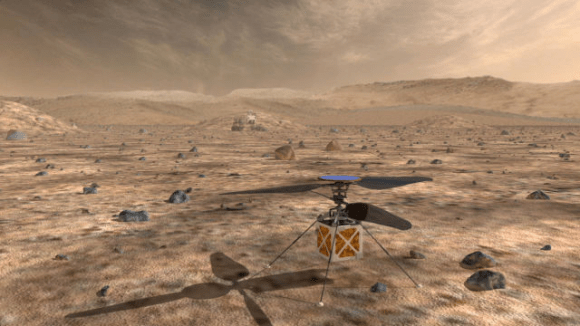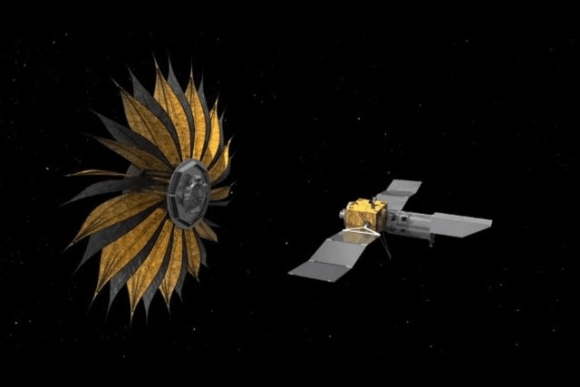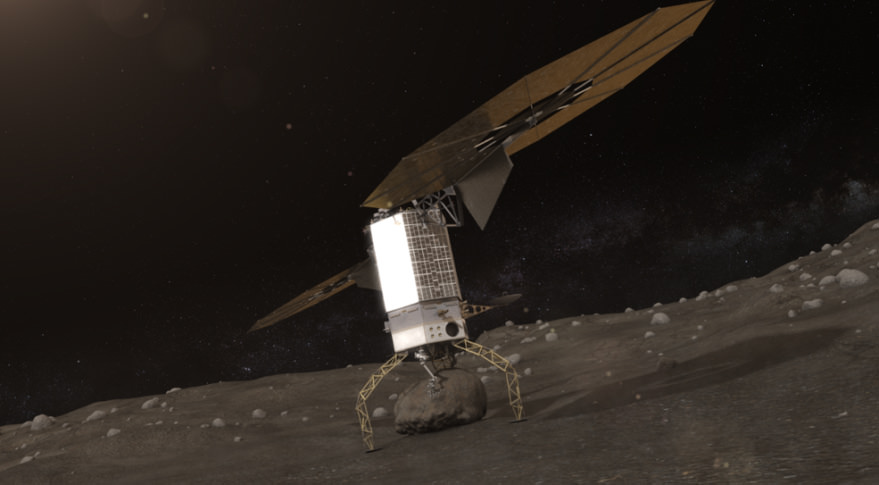It looks like mostly good news in NASA’s budget for 2017. The Commerce, Justice, and Science sub-committee is the House of Representatives body that oversees NASA finances, and they have released details on how they would like to fund NASA in 2017. According to their plan, NASA’s budget would be $19.5 billion. That amount is $500 million more than President Obama had asked for, and $200 million above what the Senate had proposed.
If the bill is approved by the House of Representatives, then this budget would be NASA’s largest in 6 years (adjusted for inflation.)
While it is good news overall, some projects that were in NASA’s plans will not be funded, according to this bill.
On the chopping block is the Asteroid Re-Direct Mission (ARM). ARM is an ambitious robotic mission to visit a large asteroid near Earth, collect a boulder weighing several tons from its surface, and put it into a stable orbit around a Moon. Once the boulder was in a stable orbit, astronauts would visit it to explore and collect samples for return to Earth. NASA had touted this mission as an important step to advancing the technologies needed for a human mission to Mars.
ARM was an intriguing and ambitious mission, but it looks like it will be unfunded. The sub-committee explained that decision by saying “The Committee believes that neither a robotic nor a crewed mission to an asteroid appreciably contribute to the overarching mission to Mars,” adding that “…the long-term costs of launching a robotic craft to the asteroid, followed by a crewed mission, are unknown and will divert scarce resources away from developing technology and equipment necessary for missions to Mars.”
Another area seeing its funding cut is the Earth Science division. That division would lose $231 million compared to 2016.
There are winners in this bill, though. The Planetary Science division would receive a $215 million boost in 2017, compared to 2016. This means a 2022 mission to Europa is still on the books, and NASA can select two more Discovery class missions.
Beyond the numbers, the Commerce, Justice, and Science sub-committee also signalled its support for a human presence on the Moon. The sub-committee stated that “NASA is encouraged to develop plans to return to the Moon to test capabilities that will be needed for Mars, including habitation modules, lunar prospecting, and landing and ascent vehicles.” This is fantastic news.
The Space Launch System (SLS) and the Orion program will also continue to receive healthy funding. These two programs are key to NASA’s long term plans, so their stable funding is good news.
There are some groovy technologies that will receive seed funding in this proposed budget.
One of these is a tiny helicopter that would work in conjunction with a rover on the surface of Mars. This solar-powered unit would fly ahead of a rover, acting as a scout to locate hazards and places of interest. This project would receive $15 million.

Another new technology receiving seed money is the Starshade. The Starshade would augment the Wide Field Infrared Survey Telescope (WFIRST). WFIRST is a space telescope designed to study dark energy, exoplanets, and infrared astrophysics. The Starshade would be separate from the WFIRST, and by blocking the light from a distant star, would allow WFIRST to image planets orbiting that star. The goal would be to detect the presence of oxygen, methane, and other chemicals associated with life, in the atmosphere of exoplanets.

The funding bill also directs NASA to consider forms of propulsion that could propel a craft at 10% of the speed of light. This includes Bussard ramjets, matter-antimatter reactors, beamed energy systems, and anti-matter catalyzed fusion reaction. The bill asks that within a year of being passed, NASA creates a draft reporting addressing interstellar propulsion, and that a roadmap be put in place for further development of these systems. The hope is that one of these systems will be in place for a trip to Alpha Centauri in 2069, which will be the 100 year anniversary of the Apollo Moon landing.
It should be noted that these numbers are not approved yet. Some of these numbers go back and forth between the levels of government before they are finalized. It would take a lesson on governance structure to explain how that all works, but suffice it to say that although they’re not finalized, yet, things look good overall for NASA.


Is the Earth Science division the one with global warming warnings?
Of course.
good
This will be good news, if it passes. The asteroid mission would be a waste. Lets concentrate on activities that will *really* contribute to getting to Mars.
Also, looking into new propulsion systems will be money well spent. We aren’t going anywhere if we can’t travel much, much faster.
accept isn’t the asteroid redirect mission much more scientifically valuable than landing on the moon?? something we did more than 45 years ago? The whole argument for the ARM mission was it could provide NASA astronauts with valuable training and experience in preparation for eventual Mars missions while also being a proving ground for new NASA technology that’s being developed with the long-term vision for manned missions to mars and at the same time achieve something that could be of actual value to science and cost-wise not break the bank.. The very reason the plan to first go back to the moon was canceled was due to its skyrocketing costs simply not working with current NASA funding levels.. Focusing all of our attention and money on funding moon missions, just delays from what everybody agrees should be our goal, a manned mars mission and in my mind going back to the moon plan now, years later, could really be the distraction and only prolong the day when NASA’s will actually use Orion and the SLS (unless Congress were to say double the NASA budget)..
The worst news in many years!
– Culbertson rips asunder the Decadal Survey (under the pretense he doesn’t), so concentrating on Mars is out and so are the medium cost missions NASA projected to get back into the usual rate.
– Congress rips apart the Mission to Mars that the Augustine report explicitly spelled out with flexible missions like ARM and avoiding the Moon diversion at all costs. To add hurt to harm Culbertson (again) divert money from needed electrical propulsion and fuel depots for interplanetary (read Moon, Mars) missions to 100 years Fantasia projects of interstellar travel.
Oy vey. C & C has seen to it that NASA will do little planetary science, no manned missions outside LEO (except possibly at exorbitant cost), and have its mission rates rips to shred for decades. :-/
Two things could resolve this issue.
1. It is too early to commit to the huge long-term decision to build a base on the Moon, as it apparently lacks volatiles and has a substantial gravitational potential well, probably at least doubling the cost of resources found there. But if it really has economically mineable deposits of water ice, that could sway the decision, as ice could be exported to low-lunar orbit, and there converted into hydrogen and oxygen for rocket propellant, possibly cheaper than it can be obtained from Earth. A robotic rover exploration mission to the lunar poles could resolve this issue, and make near-term (human?) exploration economically viable, while satisfying the mandate for further lunar investigation.
2. Phobos, the small (10 trillion tons!) moon of Mars, is actually much easier to land on and exploit than Earth’s moon, It is quite likely to have ice and other resources, as well as asteroidal materials. (It seems a pity that OSIRIS-X is not targeted there…) It is also the perfect place for a Base Camp for human exploration of Mars, making landings much safer, with big science benefits and technology opportunities covering many of the ARM mission objectives.objectives as well. This seems at least as valuable as any premature work on a human lunar base or settlement.
I think both of these steps might fit within the enhanced budget proposal, without locking us into a dead-end crewed lunar extravaganza.
Maybe I just missed it, but what would this budget do in terms of the Commercial Crew program?